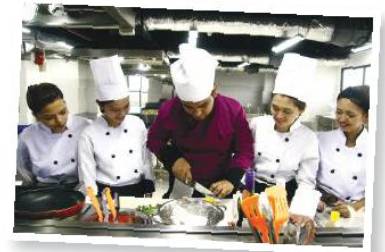Hãy nhập câu hỏi của bạn vào đây, nếu là tài khoản VIP, bạn sẽ được ưu tiên trả lời.

Khoa is a 16-year-old high school student who loves spending time with his group of friends after school. They usually go to the mall, play sports or video games, or just hang out at each other's houses. However, Khoa's parents are becoming increasingly concerned about his friends' behavior and influence on him. They've noticed that Khoa is staying out later than usual, neglecting his school work, and acting more rebellious and disrespectful at home.
Khoa's parents have tried to talk to him about their concerns and suggest that he spend less time with his friends or choose better friends, but Khoa resists their efforts. He argues that his friends are cool and fun to be with, and that his parents are just being overprotective and boring.
The situation becomes more tense when Khoa's parents find out that some of his friends have been caught smoking and shoplifting. They forbid Khoa from hanging out with them and threaten to punish him if he disobeys. Khoa feels torn between his loyalty to his friends and his respect for his parents' authority.
In this scenario, Khoa and his parents are facing a common problem of conflicting values and priorities. Khoa wants to belong to his peer group and have fun, while his parents want to protect him from negative influences and ensure his future success. It's not easy for either side to compromise or understand each other's perspective, but communication and empathy can help bridge the gap.

The text mentions three essential skills required for teenagers to become independent, which are decision-making skills, time-management skills, and life skills.
Apart from the skills mentioned in the text, some other skills teenagers need to become independent include communication skills, problem-solving skills, financial management skills, goal-setting skills, and critical thinking skills. Also, teenagers need to learn how to be emotionally intelligent and how to develop positive relationships with others.

1. I haven’ visited any castles or palaces in VietNam before. However, I know some of the most famous ones such as Hue Imperial Citadel, the Thang Long Imperial Citadel, and the Ho Dynasty Citadel. These historical sites are significant because they showcase the country's rich history and cultural heritage.
(Tôi chưa từng đến thăm bất kỳ lâu đài hay cung điện nào ở Việt Nam trước đây. Tuy nhiên, tôi biết một số địa điểm nổi tiếng nhất như Cố đô Huế, Hoàng thành Thăng Long và Thành nhà Hồ. Những di tích lịch sử này rất có ý nghĩa vì chúng thể hiện di sản văn hóa và lịch sử phong phú của đất nước.)
2. I haven’t seen this palace before, but I guess it is the Hue Imperial Citadel.
(Tôi chưa nhìn thấy cung điện này bao giờ, nhưng tôi đoán đó là Hoàng thành Huế.)

1. Based on the context of the picture, it seems like the students are taking a vocational course in cooking or culinary arts.
2. It's possible that students may need certain qualifications or prerequisites to apply for this course, such as a high school diploma or previous experience in cooking. However, it ultimately depends on the specific requirements of the course and the institution offering it.
3. Students in this course likely expect to learn various cooking techniques and recipes, as well as gain a deeper understanding of the culinary arts. They may also learn about food safety, kitchen hygiene, and restaurant management if the course covers those topics. Additionally, students may hope to gain hands-on experience in cooking and receive feedback on their dishes from their instructor. Overall, the goal of this course is likely to help students develop their skills and knowledge in the culinary field.

All of the ideas mentioned in the text are valuable and can help preserve heritage in their ways.
However, I think the idea of setting up folk clubs, as mentioned in Paragraph C, is particularly interesting. These clubs can provide opportunities for young people to learn about traditional performing arts, such as folk songs, musical instruments, and dancing. By organizing events, inviting artists to perform, and offering training to learn folk arts, the clubs can help promote and develop these traditional arts and keep them alive for future generations. Through these activities, young people can learn to appreciate their cultural heritage and become actively involved in preserving it.
Tạm dịch:
Tất cả những ý tưởng được đề cập trong văn bản đều có giá trị và có thể giúp bảo tồn di sản theo cách của chúng.
Tuy nhiên, tôi nghĩ ý tưởng thành lập các câu lạc bộ dân gian, như đã đề cập trong Đoạn C, là đặc biệt thú vị. Những câu lạc bộ này có thể tạo cơ hội cho những người trẻ tìm hiểu về nghệ thuật biểu diễn truyền thống, chẳng hạn như các bài hát dân gian, nhạc cụ và khiêu vũ. Bằng cách tổ chức các sự kiện, mời các nghệ sĩ biểu diễn và cung cấp đào tạo để tìm hiểu nghệ thuật dân gian, các câu lạc bộ có thể giúp thúc đẩy và phát triển các nghệ thuật truyền thống này và duy trì chúng cho các thế hệ tương lai. Thông qua các hoạt động này, những người trẻ tuổi có thể học cách đánh giá cao di sản văn hóa của họ và tham gia tích cực vào việc bảo tồn nó.

1. The Crazy House is the most original and clever home because of its surrealistic and unique design that incorporates natural elements and animal motifs.
2. The living sculptures made by Gregory Kloehn are the most useful from a social point of view because they provide affordable housing solutions for homeless people using recycled materials.
3. I would like to live in the shipping container housing in Brighton because it offers a cozy and private space that is affordable and sustainable.
4. I would not like to live in the Crazy House because its unconventional design may not be practical for everyday living, and may not offer enough privacy or storage space.

I want to know more about an ASEAN talk show on women in sport took place in December.
(Tôi muốn biết thêm về một chương trình trò chuyện về phụ nữ trong thể thao ASEAN diễn ra vào tháng 12.)
Because the ASEAN talk show on women in sport was to promote gender equality in sports and raise awareness about the importance of providing opportunities for women and girls to participate in sports.
(Vì chương trình trò chuyện về phụ nữ trong thể thao của ASEAN nhằm thúc đẩy bình đẳng giới trong thể thao và nâng cao nhận thức về tầm quan trọng của việc tạo cơ hội cho phụ nữ và trẻ em gái tham gia thể thao.)

A list of characteristics of independent learners for discussion purposes:
Self-motivated: Independent learners are motivated by their own interests and goals, not just external rewards or pressures.
Self-directed: They take responsibility for their own learning and actively seek out resources and opportunities to improve their knowledge and skills.
Self-aware: They understand their own strengths and weaknesses, learning style, and preferences, and use that knowledge to guide their learning process.
Goal-oriented: They set clear and specific learning goals and regularly assess their progress toward achieving them.
Persistent: They persevere through challenges and setbacks and keep working toward their goals.
Reflective: They regularly reflect on their learning experiences and use that feedback to improve their learning strategies.
Resourceful: They know how to find and use a variety of learning resources, including books, online courses, mentors, and peers.
Curious: They have a strong desire to learn and explore new ideas and topics.
Creative: They think outside the box and find innovative ways to solve problems and achieve their goals.
Collaborative: They work well with others and are open to learning from different perspectives and experiences.

1a. Which of the activities in the photos looks most fun?
(Hoạt động nào trong các bức ảnh trông thú vị nhất?)
I think the activity in the photo which looks most fun is going hiking. This is because while we go hiking over a long distance with our team, we can have some small talks and share everything together on the way.
(Tôi nghĩ rằng hoạt động trong ảnh trông thú vị nhất là đi bộ đường dài. Điều này là do trong khi chúng tôi đi bộ đường dài với nhóm của mình, chúng tôi có thể có một số cuộc trò chuyện nhỏ và chia sẻ mọi thứ cùng nhau trên đường đi.)
1b. Which of the activities in the photos looks most challenging?
(Hoạt động nào trong các bức ảnh có vẻ khó khăn nhất?)
In my opinion, the most challenging activity is climbing because I am extremely afraid of heights.
(Theo tôi, hoạt động thử thách nhất là leo núi vì tôi cực kỳ sợ độ cao.)
1c. Which of the activities in the photos looks most dangerous?
(Hoạt động nào trong các bức ảnh trông nguy hiểm nhất?)
Karting is the most dangerous activity. I have never seen this activity before; however, I can see the runners wearing a lot of protective clothes, so I think it's dangerous.
(Karting là hoạt động nguy hiểm nhất. Tôi chưa bao giờ thấy hoạt động này trước đây; tuy nhiên, tôi có thể thấy những người chạy bộ mặc rất nhiều quần áo bảo hộ, vì vậy tôi nghĩ điều đó rất nguy hiểm.)
2. Have you ever tried any of the adventure activities in exercise 1? If so, did you enjoy them? If not, would you like to try them?
(Bạn đã bao giờ thử bất kỳ hoạt động mạo hiểm nào trong bài tập 1 chưa? Nếu vậy, bạn có thích chúng không? Nếu chưa, bạn có muốn thử chúng không?)
I have never tried any of the adventure activities in exercise 1. Actually, I am not a brave person, so I usually avoid these activities.
(Tôi chưa bao giờ thử bất kỳ hoạt động mạo hiểm nào trong bài tập 1. Thực sự tôi không phải là người dũng cảm, vì vậy tôi thường tránh những hoạt động này.)


Tham khảo:
I find the advice about healthy eating very useful. I usually avoid eating food with too much salt or sugar, and try to eat more fruit and vegetables. But I don't pay much attention to food labels. I think I'll try to read them from now on before I buy any food items.
The last piece of advice is most useful for me. I avoid having coffee or tea before bed, but I keep reading messages and posts on my phone in bed, and then find it hard to fall asleep. I think this is an unhealthy habit. I'll try to turn off my phone before I go to bed in the future.